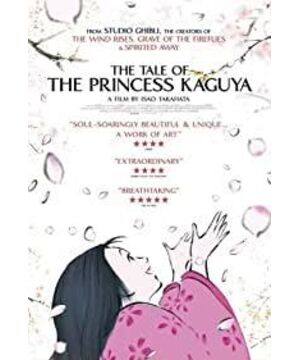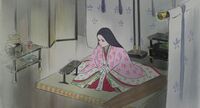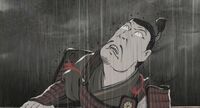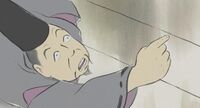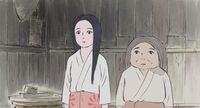Toshio Suzuki was helpless when he mentioned Takahata Hoon. It was too slow. From six or seven years ago, he started to conceive it until the project of Hayao Miyazaki's "The Wind Rises". The poster is also a form of two heroes side by side. But in the end, it was regrettable to find that I couldn't keep up. Forgetting whether it was Hayao Miyazaki, he said bluntly in a conversation that he couldn't finish this work.
Takahata Hoon, who had never seen him, showed his face at the end of the film. A man who seemed silent and solemn always seemed to be thinking.
Fortunately, this work is finally available.
The first feeling is that the picture is so beautiful. With the flick of the ink and wash, every frame can be used as a wallpaper, especially those fields and flowers. No wonder Kaguya can't forget. Only by the exquisiteness of the painting, one can understand that the painstaking efforts of those years were not in vain.
Another point is the beauty of music. At the end of the film, it is known that the three nursery rhymes symbolizing the different stages of Kaguya Hime were from Takahata's own hands. The tune is very ancient and elegant, I always thought it originated from the era of the famous nursery rhyme "Bamboo Cage Eye". The changes in the lyrics appropriately reflect Kaguya Ji's heart, from the joyous praise of nature's flowers, birds, insects, and fish, to the cry of returning home for some reason, and the epiphany of the cycle of four seasons at the end of her parting. I personally think that music is more expressive than the storyline, and it runs through the entire film.
The last point is the part that I paid the most attention to at the beginning-"Taketori Tale" is really a familiar story. What new ideas can be unearthed? Compared to the short original, the most obvious complement to the details is the character of Kaguyahime and the role of Samaru, a childhood sweetheart. After the third of the film was broadcast, I suddenly remembered where the strong sense of sight came from: This girl did not so much come from the moon, it is better to say that she traveled back from modern times!
Even though she is talented and proficient in all kinds of piano, chess, calligraphy, and painting, she still likes to run with her feet in the bamboo forest; living in a luxurious mansion in a Chinese dress, she would rather plant flowers and plants in the backyard to do needlework. Kaguya Ji, who has advanced modern feminine consciousness, has been pursuing an independent personality. Whether it was rejecting the courtship of the emperor, nobles, or even the emperor, or having a flying dream with childhood sweethearts, the spirit of pursuing free love in that era was really commendable. In the end, Kaguya Ji returned to the moon, but she looked back at the earth in the moon feather robe, still in tears, as if she had not forgotten the human feelings and worries in the world.
Classical painting style, classical music, born out of classical girls in classical literature, but with a modern heart. Some people may feel that the three views are violated and feel a little bit strong, but don’t forget, it is us modern people who watch this work, it is us who are clamoring to have independent personality and free love, but there is no way to be in pain. When I was angry, I could escape from the earth. When I was angry, I had a dream of separation from the body and the soul. I was born to be able to do the things I didn’t like but had to do so well... But, even such Kaguyaji still didn’t live. happy.
View more about The Tale of The Princess Kaguya reviews


